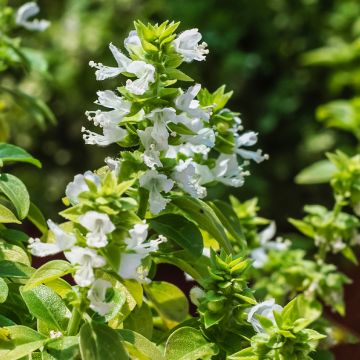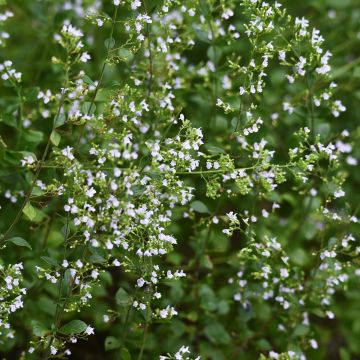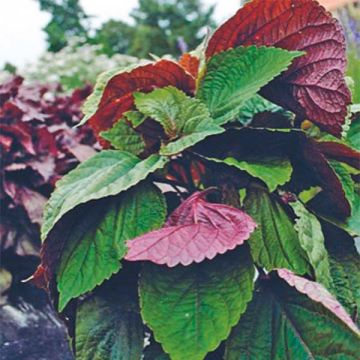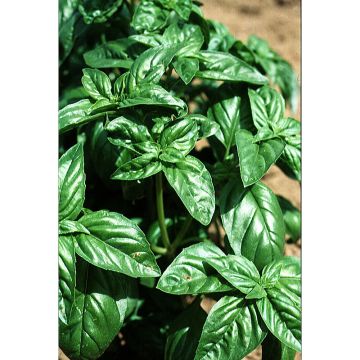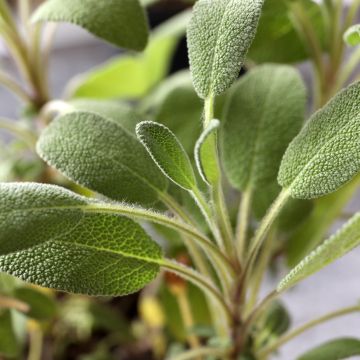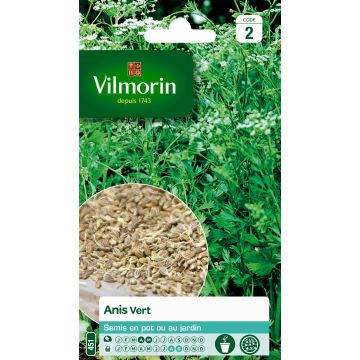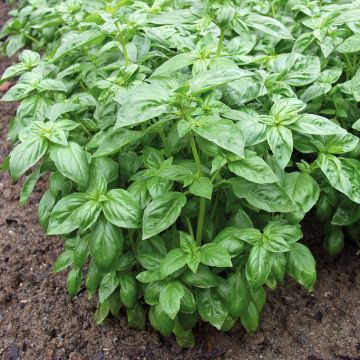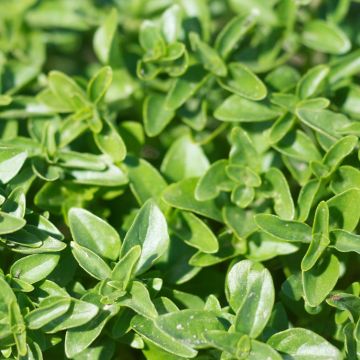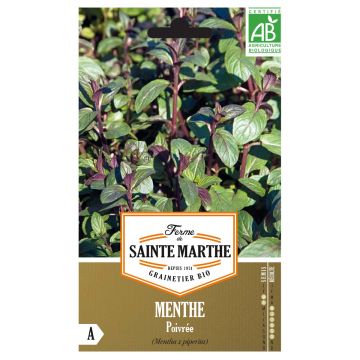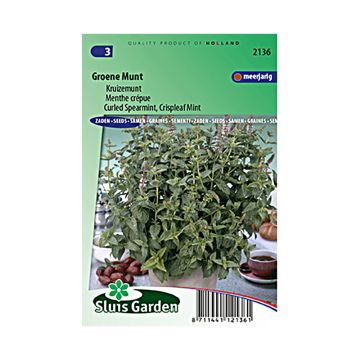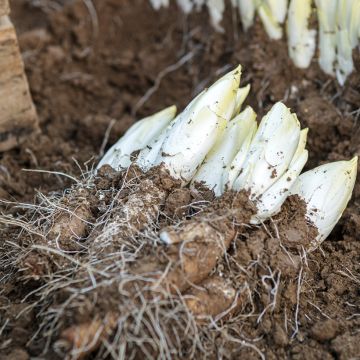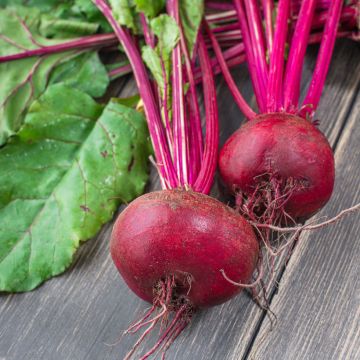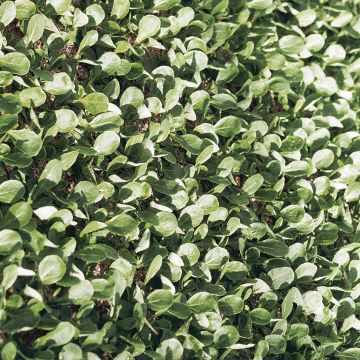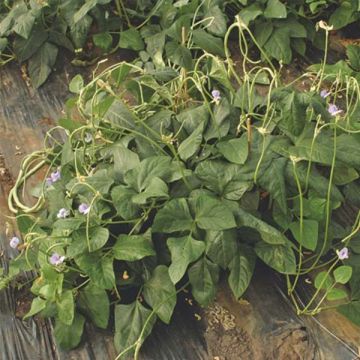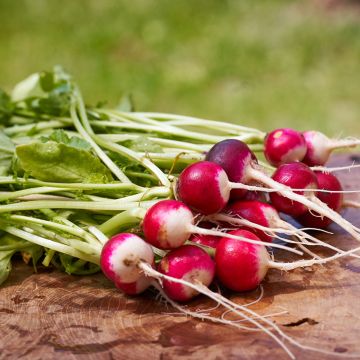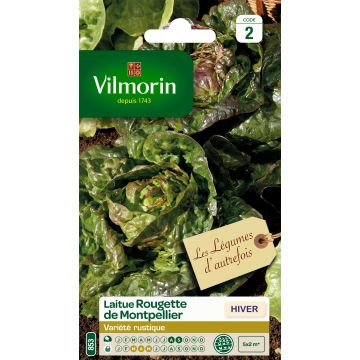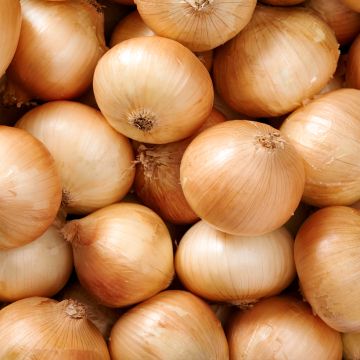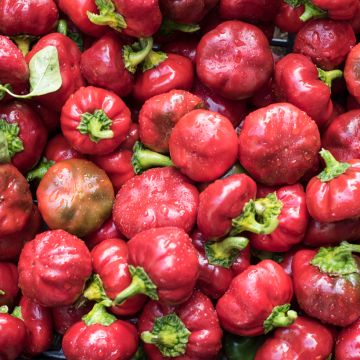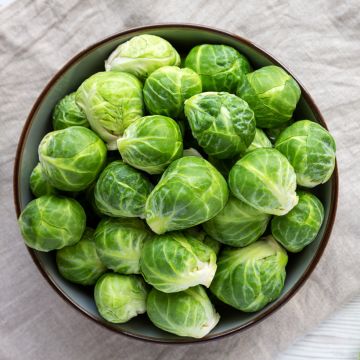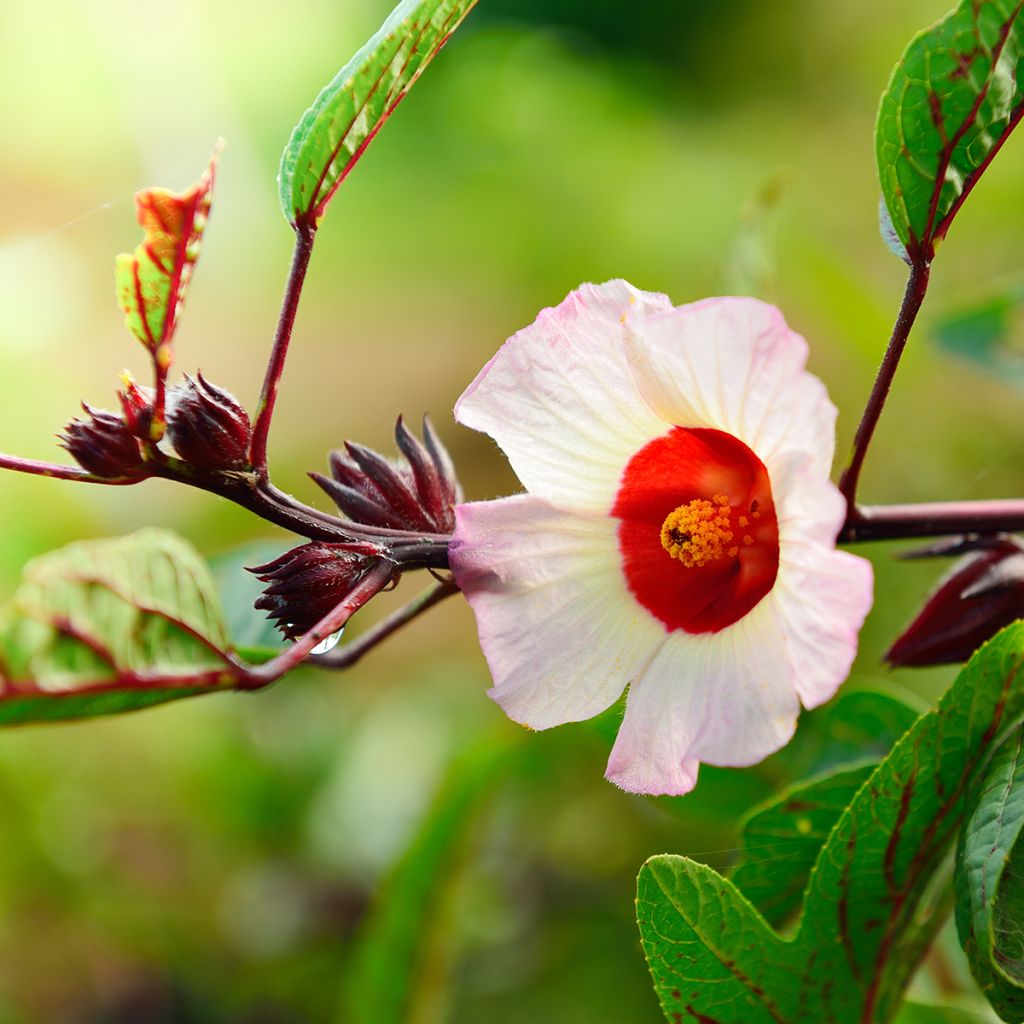

Hibiscus sabdariffa - Guinea Sorrel seeds
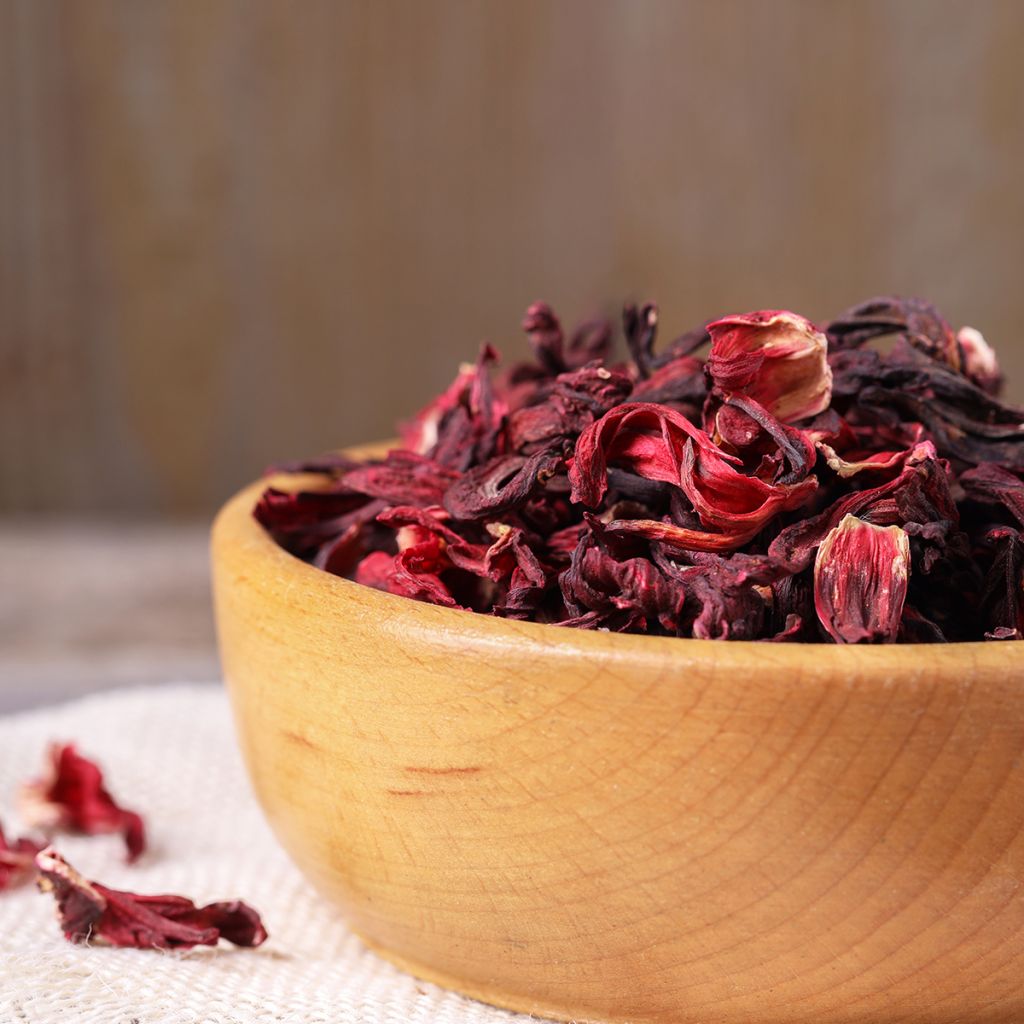

Hibiscus sabdariffa - Guinea Sorrel seeds
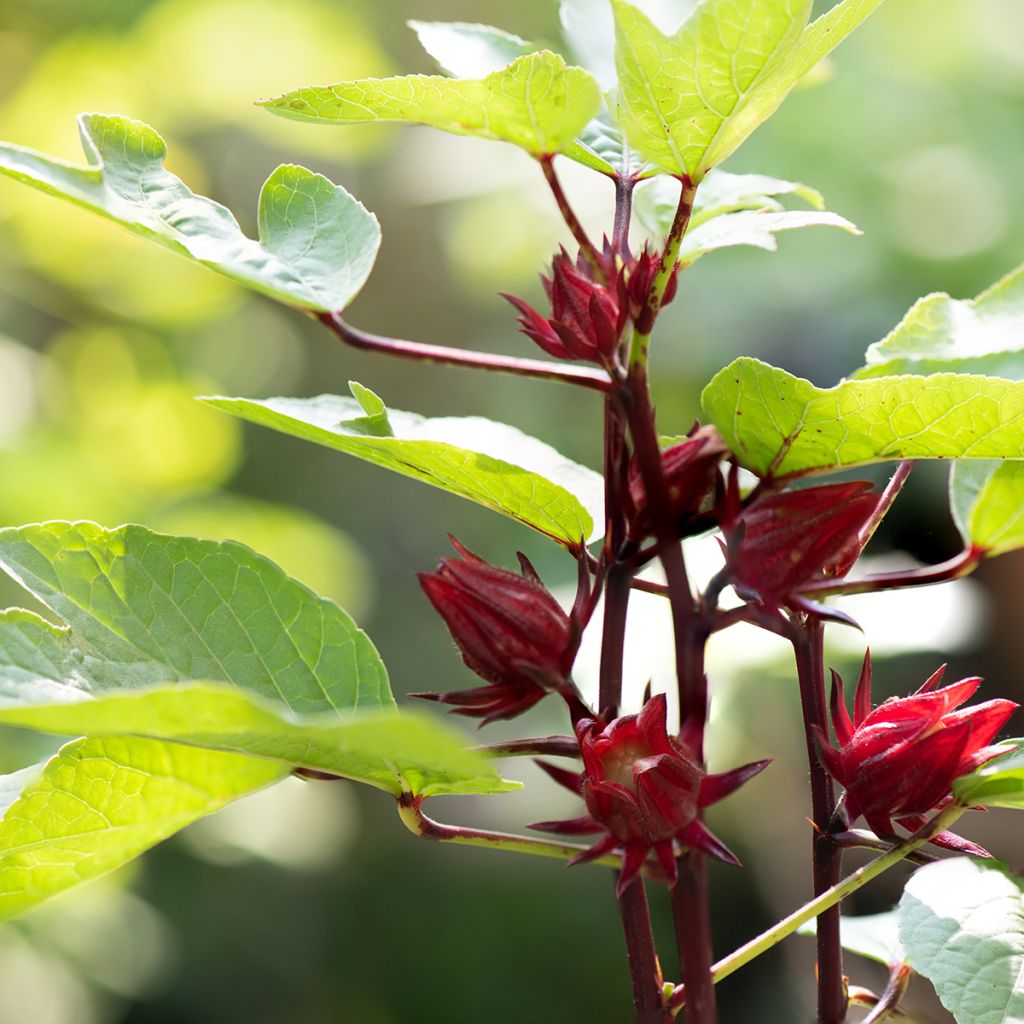

Hibiscus sabdariffa - Guinea Sorrel seeds
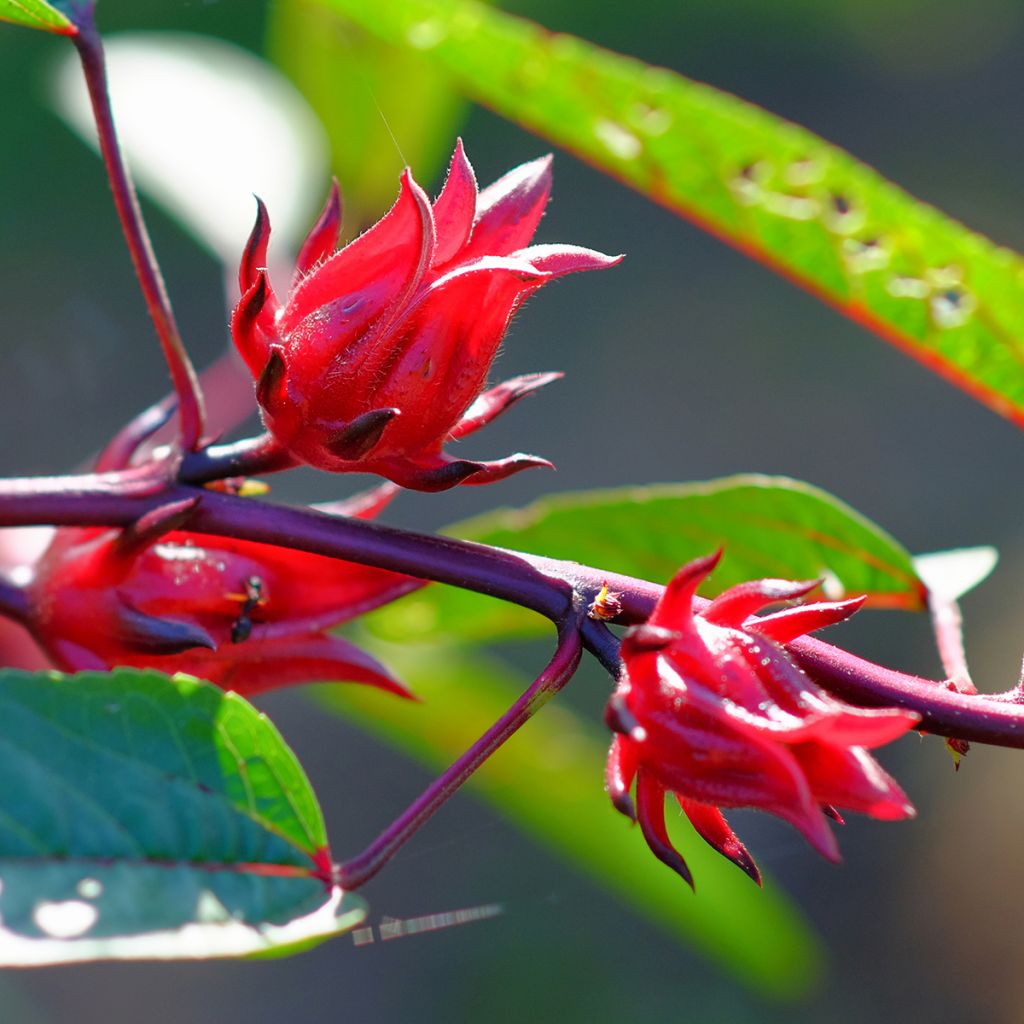

Hibiscus sabdariffa - Guinea Sorrel seeds
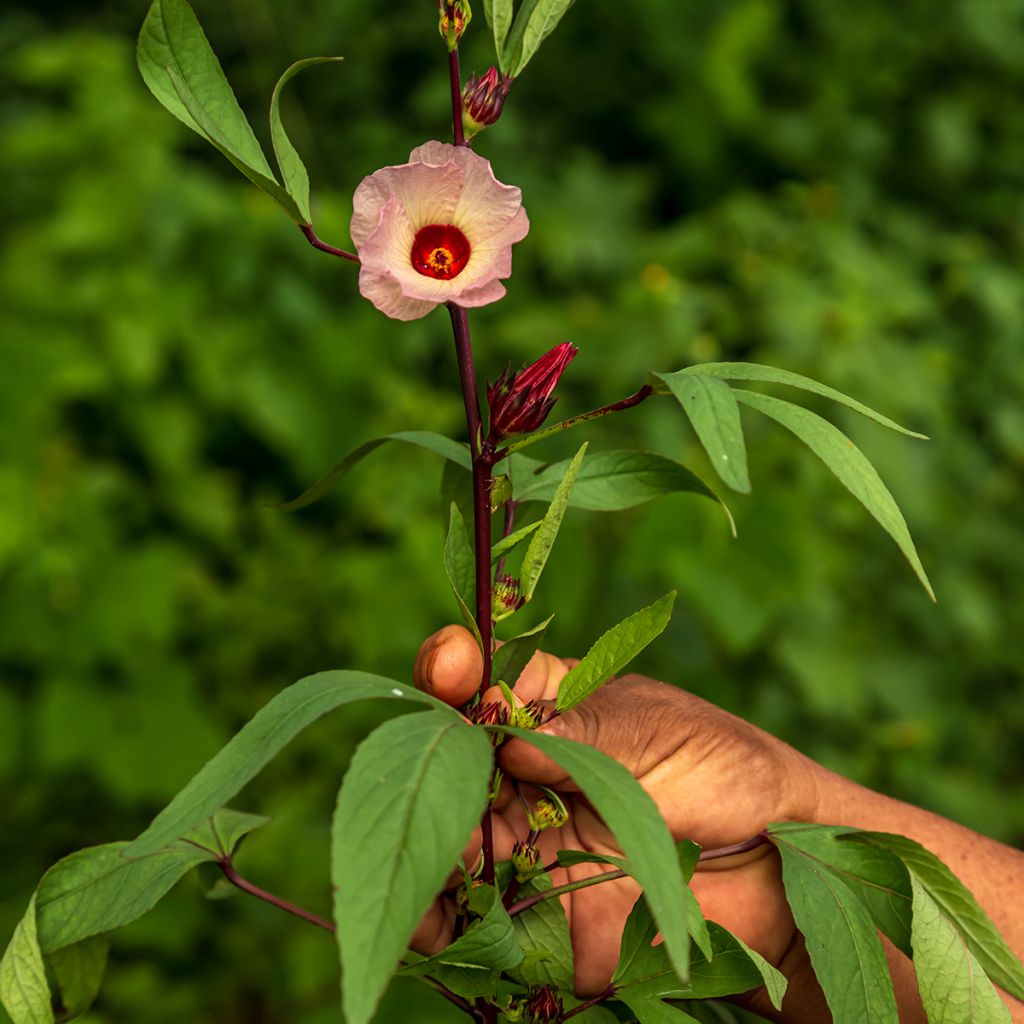

Hibiscus sabdariffa - Guinea Sorrel seeds
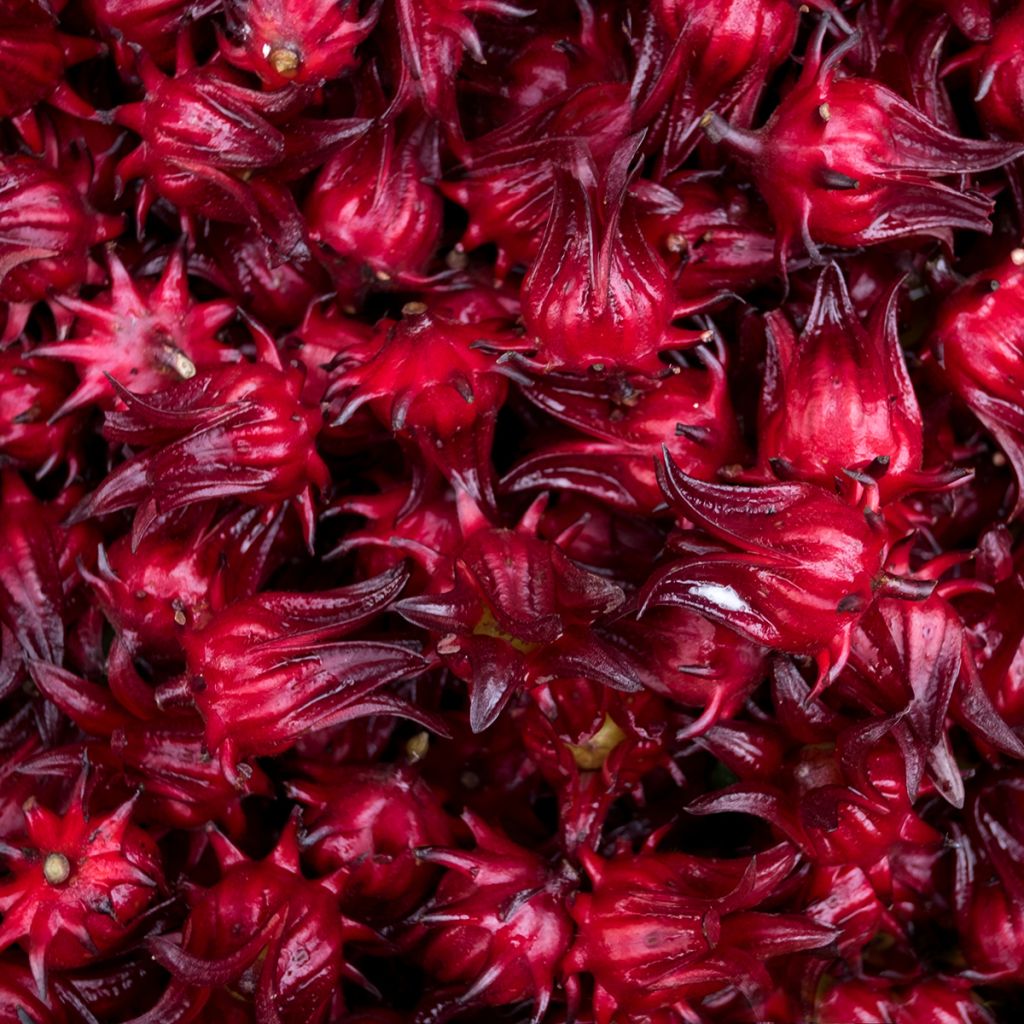

Hibiscus sabdariffa - Guinea Sorrel seeds
Hibiscus sabdariffa - Guinea Sorrel seeds
Hibiscus sabdariffa
Roselle, Sorrel, Red Sorrel, Jamaica Sorrel, Indian Sorrel, Guinea Sorrel, Florida Cranberry, Jamaica Tea Flower, Sudanese Tea, Hibiscus Tea
Labeling error, there are 26 seeds per 1 gram and not 300 seeds.
Plume, 23/01/2025
This item cannot be shipped to the selected country
Dispatch by letter from €3.90
More information
Schedule delivery date,
and select date in basket
This plant carries a 6 months recovery warranty
More information
We guarantee the quality of our plants for a full growing cycle, and will replace at our expense any plant that fails to recover under normal climatic and planting conditions.
Seed-only orders are dispatched by sealed envelope. The delivery charge for seed-only orders is €3.90.
Description
Guinea Sorrel (Hibiscus sabdariffa) is a tropical plant that can be cultivated in our climates as an annual, by taking care to plant it in a warm location, in light and humus-bearing soil with regular watering according to the climate's needs. It offers a superb summer flowering on an elegant bush with graceful foliage. It is a plant that is a source of benefits. The leaves can be consumed as a vegetable and the flowers, aromatic and sweet, are the basis for many uses, in cooking, in infusion or as a refreshing drink, Bissap.
Guinea Sorrel, in Latin Hibiscus sabdariffa, has different names depending on the countries where it is produced. For example, in Martinique and Guadeloupe, it is called: groseille pays; in Egypt and Mexico, it is called: Karakandji. Thus, it can commonly be called: Roselle, Christmas Berry, Karkadé, Bissap, Carcadet, Abyssinian Rose Tea, Empire Tea, Flor de Jamaïca. It belongs to the Malvaceae family, like Hollyhock, Marshmallow, and Mallow. Originally from Guinea, it grows and is produced in tropical regions of Southeast Asia (India, Sri Lanka, Thailand...), West Africa (Senegal, Benin, Togo, Niger...), and Mexico. It is a herbaceous shrub that does not tolerate temperatures below 8°C (46.4°F) well, which is why in our climates, it is cultivated as an annual to be sown every year. It forms a dense and ramified clump that can reach 1.80 to 2m (6 to 7ft) in height and 1.20 m (4ft) in spread. The reddish branches bear green leaves, with 3 or 5 lobes, lanceolate, alternate, 5 to 10cm (2 to 4in) long, with very pronounced red-purple veins at the base and a red petiole as well. The flowers, about 8cm (3in) in diameter, open in a corolla composed of 5 pale pink petals tinged with yellow towards the centre, surrounding a dark purple heart. At maturity, after the petals fall, a swollen and fleshy purple calyx remains attached. It contains fruits in the form of capsules, with 25 to 35 seeds, brown, round, 3 to 4mm (0in) in size, inside.
Of rapid growth, Guinea Sorrel is very decorative with its flowering in July-August and remains so throughout the autumn with its large fruits that persist on the plant until late in the season. Although it can be cultivated for its ornamental values alone, it offers many benefits for the body. Their properties have been known for millennia. The Mayas of the highlands to the west of Guatemala have been using it for a long time and in Africa, it is used in traditional medicine. As a vegetable, the leaves and young shoots can be consumed raw or cooked. The flavours, both sweet, acidic, and fruity, of the flowers of Hibiscus sabdariffa are very similar to those of Chiloé Pepper (Drimys winteri). Rich in vitamin C and a source of antioxidants, the dried red calyces are highly appreciated in infusion. Moreover, these infusions can be used to flavour sauces or jams. The flowers bring a sweet taste to pastries, crème brûlée, or custard. This plant is credited with many medicinal virtues, including actions on obesity, the urinary system, and diabetes.
Bissap is a rosy red, fruity, and tangy drink, made from the flowers (petals and calyces) of Guinea Sorrel. Very refreshing, it can be consumed cold or hot. In West Africa, this widely popular drink is called: karkadé or carcadé. Easy to prepare, simply infuse the equivalent of 3 tablespoons of Guinea Sorrel flowers in 100ml of water, either brought to a boil for 15 minutes or left in cold water for about ten hours. To flavor Bissap, ginger or mint can be added.
Hibiscus sabdariffa can be sown from March to May in a heated shelter, and then transplanted into open ground from June when the soil is warmer. It can be grown in a pot, which will allow it to be brought inside for the winter. The plant freezes at 0°C (32°F). This exotic plant grows quickly. It can be placed individually, on the lawn, in a summer flower bed, taking into account its height, or in a pot on a terrace, being careful with watering. Its very melliferous flowers attract pollinating insects in the garden. It requires warmth and sunlight, in cool, well-drained, and humus-bearing soil. During the summer, not tolerating drought, a lack of water can be devastating. In our climates, in the fall, during the fruiting period, excess water should be monitored. For consumption, the flowers are harvested as they bloom. In order to ensure future sowing, the seeds are collected at the end of autumn.
The gardener's little tip: Guinea Sorrel is quite sensitive to red spider mites, a family of mites, as well as aphids. To combat these pests, spray a solution based on black soap (asphyxiation action) or baking soda (repellent action) or white vinegar (repellent action in case of mild infestation).
Report an error about the product description
Hibiscus sabdariffa - Guinea Sorrel seeds in pictures
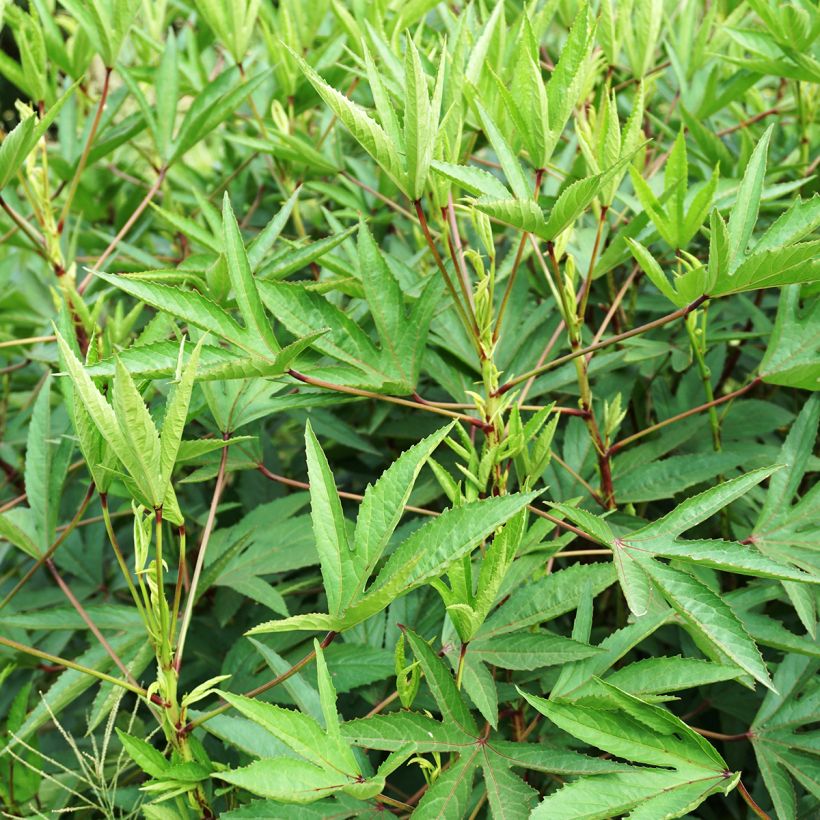

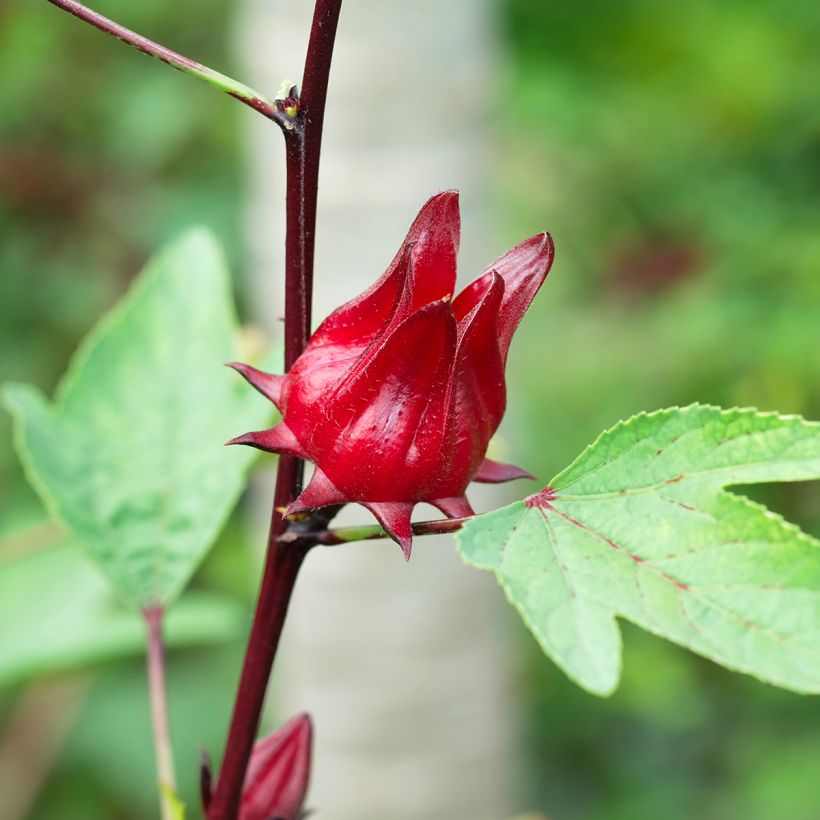

Harvest
Plant habit
Foliage
Botanical data
Hibiscus
sabdariffa
Malvaceae
Roselle, Sorrel, Red Sorrel, Jamaica Sorrel, Indian Sorrel, Guinea Sorrel, Florida Cranberry, Jamaica Tea Flower, Sudanese Tea, Hibiscus Tea
Abelmoschus cruentus, Furcaria sabdariffa
West Africa
Perennial
Other Herb seeds
Planting and care
Sowing in heated shelter: Sowing of Guinea Sorrel is done from late March to May. From mid-February to May, sow indoors or in heated greenhouses at temperatures between 22 and 25°C (71.6 and 77°F). Before sowing, it is necessary to soak the seeds for 24 to 48 hours in warm water, renewing it every 12 hours, until they swell. Sow in a tray with a fine and calibrated substrate, based on a special sowing compost and sand. Sow, then cover the seeds with a layer, ideally of vermiculite or a fine substrate (sand and compost) of about 3mm (0in), lightly press down and water.
Place the tray in a well-lit area, but without direct sunlight. Cover the tray with a transparent lid to concentrate temperature and humidity. Water regularly to keep the substrate moist but not soaked. Air daily to renew the air and remove excess humidity. The germination time varies greatly, from 10 to 15 days and sometimes from 1 to 3 months.
Transplanting: The young seedlings can be transplanted when they reach a height of 8 to 10cm (3 to 4in) and their root system is sufficiently developed. Either in 9cm (4in) pots, in a light and well-draining substrate, under shelter for a few weeks to strengthen the plant before planting it in the ground in June. Or directly in the ground, around June, once the risk of frost has passed and the soil is warmer. Be sure to protect the young seedlings from intense sunlight and provide constant but not excessive moisture.
Acclimatizing the young plants to outdoor conditions is important. It should be done gradually under sufficiently warm climatic conditions, but without direct sunlight.
Cultivation: Guinea Sorrel prefers loose, deep, well-drained, and organic-rich soils. Choose the sunniest and warmest spots in the garden. At the base of a south-facing wall is an ideal position. Space the plants about 0.60 to 1m (2 to 3ft) apart. After that, cultivation is easy. Only water generously in case of prolonged drought. Mulching around the plants helps retain some moisture and reduces the need for weeding.
Seedlings
Care
Intended location
-
, onOrder confirmed
Reply from on Promesse de fleurs
Vegetable seeds
Haven't found what you were looking for?
Hardiness is the lowest winter temperature a plant can endure without suffering serious damage or even dying. However, hardiness is affected by location (a sheltered area, such as a patio), protection (winter cover) and soil type (hardiness is improved by well-drained soil).

Photo Sharing Terms & Conditions
In order to encourage gardeners to interact and share their experiences, Promesse de fleurs offers various media enabling content to be uploaded onto its Site - in particular via the ‘Photo sharing’ module.
The User agrees to refrain from:
- Posting any content that is illegal, prejudicial, insulting, racist, inciteful to hatred, revisionist, contrary to public decency, that infringes on privacy or on the privacy rights of third parties, in particular the publicity rights of persons and goods, intellectual property rights, or the right to privacy.
- Submitting content on behalf of a third party;
- Impersonate the identity of a third party and/or publish any personal information about a third party;
In general, the User undertakes to refrain from any unethical behaviour.
All Content (in particular text, comments, files, images, photos, videos, creative works, etc.), which may be subject to property or intellectual property rights, image or other private rights, shall remain the property of the User, subject to the limited rights granted by the terms of the licence granted by Promesse de fleurs as stated below. Users are at liberty to publish or not to publish such Content on the Site, notably via the ‘Photo Sharing’ facility, and accept that this Content shall be made public and freely accessible, notably on the Internet.
Users further acknowledge, undertake to have ,and guarantee that they hold all necessary rights and permissions to publish such material on the Site, in particular with regard to the legislation in force pertaining to any privacy, property, intellectual property, image, or contractual rights, or rights of any other nature. By publishing such Content on the Site, Users acknowledge accepting full liability as publishers of the Content within the meaning of the law, and grant Promesse de fleurs, free of charge, an inclusive, worldwide licence for the said Content for the entire duration of its publication, including all reproduction, representation, up/downloading, displaying, performing, transmission, and storage rights.
Users also grant permission for their name to be linked to the Content and accept that this link may not always be made available.
By engaging in posting material, Users consent to their Content becoming automatically accessible on the Internet, in particular on other sites and/or blogs and/or web pages of the Promesse de fleurs site, including in particular social pages and the Promesse de fleurs catalogue.
Users may secure the removal of entrusted content free of charge by issuing a simple request via our contact form.
The flowering period indicated on our website applies to countries and regions located in USDA zone 8 (France, the United Kingdom, Ireland, the Netherlands, etc.)
It will vary according to where you live:
- In zones 9 to 10 (Italy, Spain, Greece, etc.), flowering will occur about 2 to 4 weeks earlier.
- In zones 6 to 7 (Germany, Poland, Slovenia, and lower mountainous regions), flowering will be delayed by 2 to 3 weeks.
- In zone 5 (Central Europe, Scandinavia), blooming will be delayed by 3 to 5 weeks.
In temperate climates, pruning of spring-flowering shrubs (forsythia, spireas, etc.) should be done just after flowering.
Pruning of summer-flowering shrubs (Indian Lilac, Perovskia, etc.) can be done in winter or spring.
In cold regions as well as with frost-sensitive plants, avoid pruning too early when severe frosts may still occur.
The planting period indicated on our website applies to countries and regions located in USDA zone 8 (France, United Kingdom, Ireland, Netherlands).
It will vary according to where you live:
- In Mediterranean zones (Marseille, Madrid, Milan, etc.), autumn and winter are the best planting periods.
- In continental zones (Strasbourg, Munich, Vienna, etc.), delay planting by 2 to 3 weeks in spring and bring it forward by 2 to 4 weeks in autumn.
- In mountainous regions (the Alps, Pyrenees, Carpathians, etc.), it is best to plant in late spring (May-June) or late summer (August-September).
The harvesting period indicated on our website applies to countries and regions in USDA zone 8 (France, England, Ireland, the Netherlands).
In colder areas (Scandinavia, Poland, Austria...) fruit and vegetable harvests are likely to be delayed by 3-4 weeks.
In warmer areas (Italy, Spain, Greece, etc.), harvesting will probably take place earlier, depending on weather conditions.
The sowing periods indicated on our website apply to countries and regions within USDA Zone 8 (France, UK, Ireland, Netherlands).
In colder areas (Scandinavia, Poland, Austria...), delay any outdoor sowing by 3-4 weeks, or sow under glass.
In warmer climes (Italy, Spain, Greece, etc.), bring outdoor sowing forward by a few weeks.

































